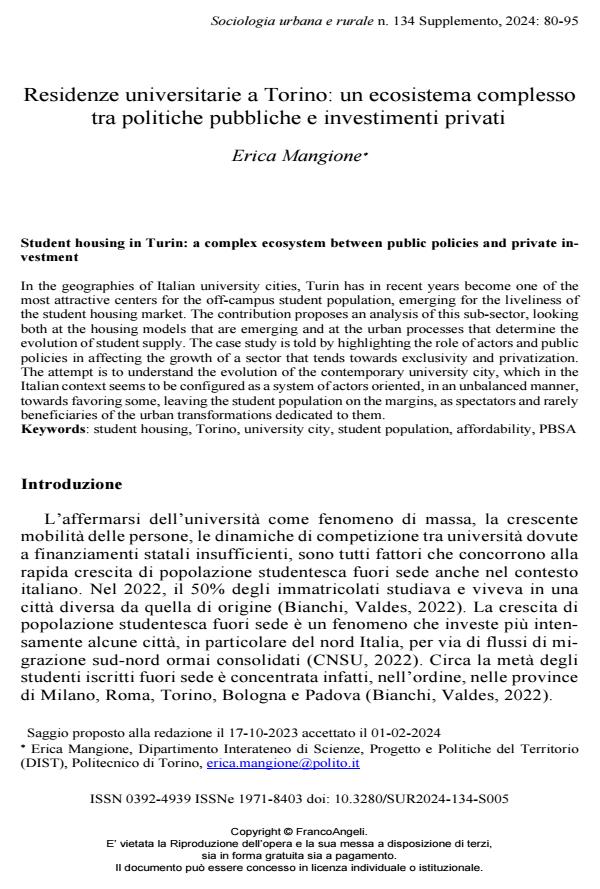Residenze universitarie a Torino: un ecosistema complesso tra politiche pubbliche e investimenti privati
Titolo Rivista SOCIOLOGIA URBANA E RURALE
Autori/Curatori Erica Mangione
Anno di pubblicazione 2024 Fascicolo 2024/134 Suppl.
Lingua Italiano Numero pagine 16 P. 80-95 Dimensione file 225 KB
DOI 10.3280/SUR2024-134-S005
Il DOI è il codice a barre della proprietà intellettuale: per saperne di più
clicca qui
Qui sotto puoi vedere in anteprima la prima pagina di questo articolo.
Se questo articolo ti interessa, lo puoi acquistare (e scaricare in formato pdf) seguendo le facili indicazioni per acquistare il download credit. Acquista Download Credits per scaricare questo Articolo in formato PDF

FrancoAngeli è membro della Publishers International Linking Association, Inc (PILA)associazione indipendente e non profit per facilitare (attraverso i servizi tecnologici implementati da CrossRef.org) l’accesso degli studiosi ai contenuti digitali nelle pubblicazioni professionali e scientifiche
Nelle geografie delle città universitarie italiane, Torino emerge per la vivacità del mercato dell’abitare studentesco. Il contributo guarda all’aumento dell’offerta per studenti mettendo in luce il ruolo degli attori e delle politiche: il pubblico tra piani e definanziamenti strutturali, i privati tra capacità di fare rete e grandi operazioni immobiliari. Gli esiti di queste azioni parallele si mostrano nella crescita di un settore dell’abitare per studenti sempre più esclusivo ed inaccessibile.
Parole chiave:abitare studentesco, Torino, città universitaria, popolazione studentesca, accessibilità economica, PBSA.
- Local Economic Systems and Housing Real Estate Markets in University Towns Francesca Torrieri, Alessandra Oppio, Marco Rossitti, pp.101 (ISBN:978-3-031-91894-0)
Erica Mangione, Residenze universitarie a Torino: un ecosistema complesso tra politiche pubbliche e investimenti privati in "SOCIOLOGIA URBANA E RURALE" 134 Suppl./2024, pp 80-95, DOI: 10.3280/SUR2024-134-S005